The Shioya Fall Festival
After a pause for more than two years, because of the corona virus pandemic, Japanese festivals are finally coming back! Festivals happen throughout the year but fall festivals seem to be especially popular. This is only natural since one of their functions is to celebrate the bounty of the season — the rice harvest is done, fruits and veggies are abundant — and to enjoy the last of the good weather as the leaves start to change color and the temperatures drop.
This fall I had the pleasure and privilege of taking part in the Shioya Fall Festival. Shioya (塩屋: or the “salt merchant district”) is an area on the west side of Ako that was traditionally home to salt-makers and farmers. There are still many rice and vegetable fields between the clusters of houses and the mountains, but the salt production has since moved elsewhere. Both occupations are of course quite labor intensive and so the residents of Shioya are known for their strength and resilience. These are celebrated in the crowning moments of this festival, but I will get back to that.
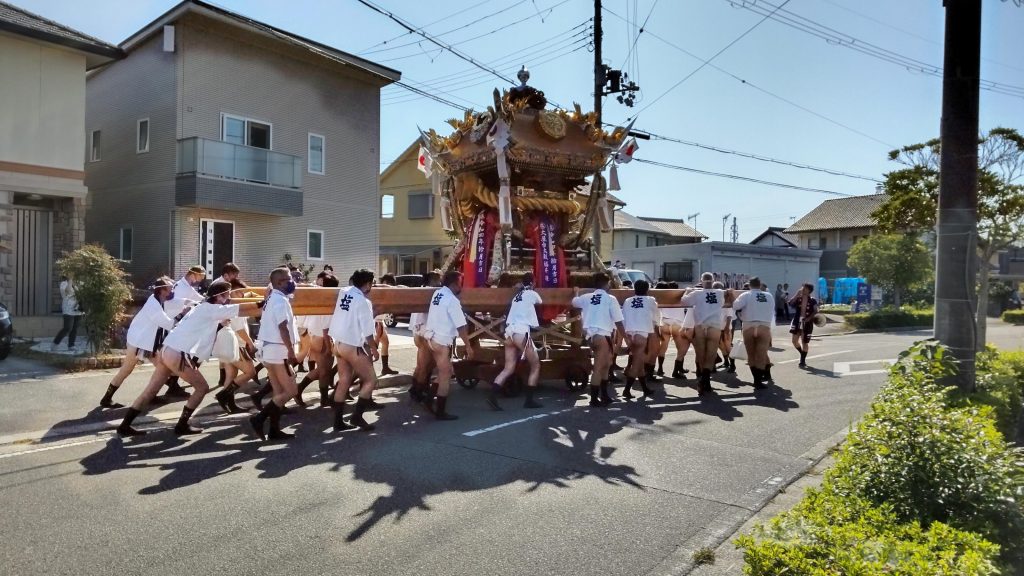
The basic idea of the festival is simple enough — the neighborhood associations of Shioya and neighboring Ako-West build and maintain festival floats or “yatai” which are portable shrines which rest on heavy carts. Each shrine is built in the form of a small house with a large taiko drum in the center and just enough room around the perimeter of the drum for the legs of the drummers. The smaller shrines, which are wheeled around by elementary and middle school aged kids each have two drummers and the larger shrine which is wheeled around by adults has four drummers. The drummers are middle school-aged kids, at least in the bigger yatai. During the festival, these shrines are dragged around the neighborhood in a circuitous route that essentially covers the whole region and ends at the shrine. While they are moving around the drummers keep time with a slow steady rhythm, and a chant leader sings a traditional folk song with periodic choruses of the 30 or so people pushing the cart around. Everyone is dressed in ceremonial clothing — long robes in the case of the drummers, loin cloths (at least for the adults), tabi cloth shoes and happi shirts on the part of those chanting and dragging the carts around.
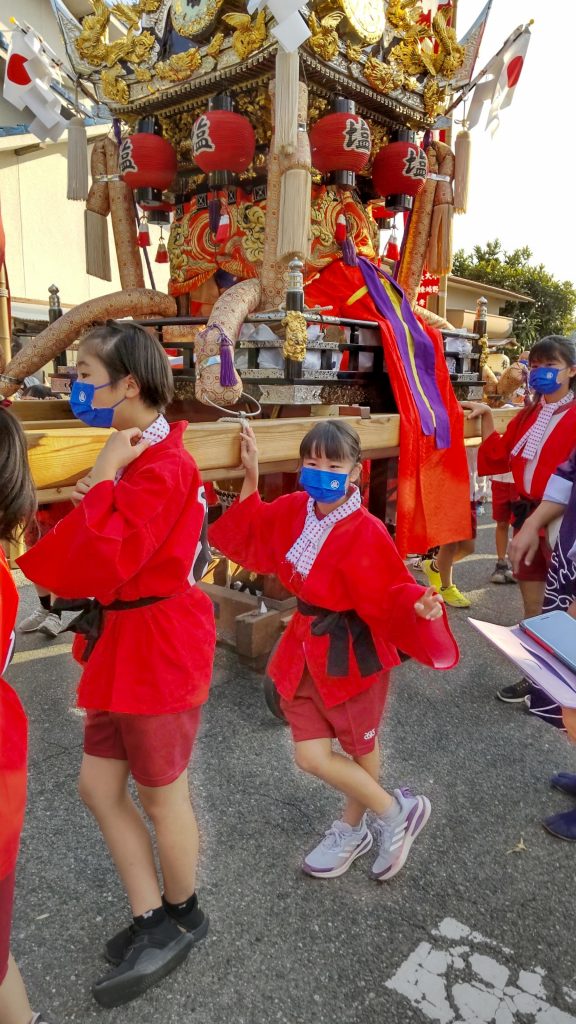
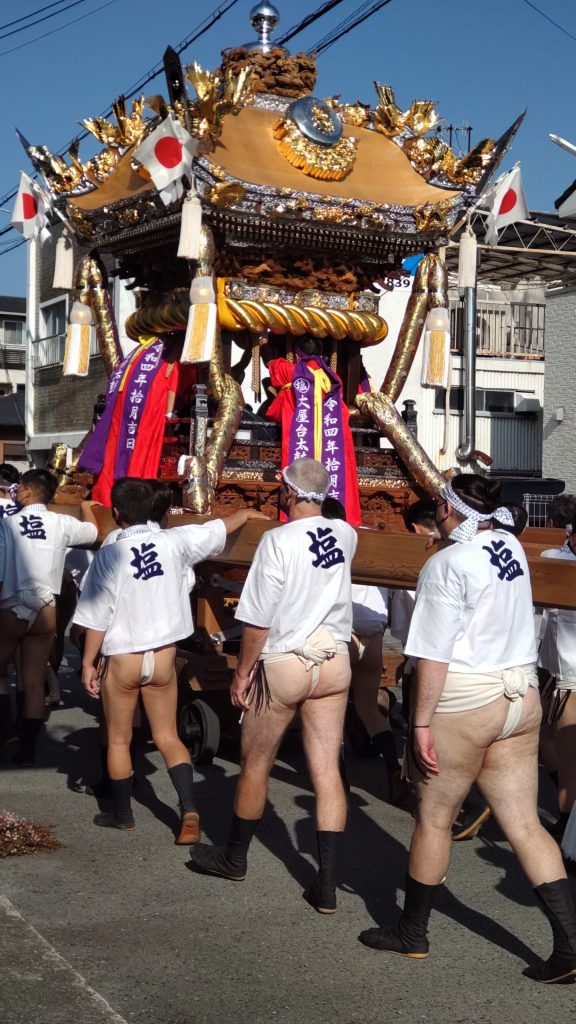
Once all of the neighborhood is visited the carts all head in a line to the shrine which sits against the base of a mountain on the north edge of the neighborhood. Here each shrine in turn is picked up by its team and carried to the four corners of the courtyard in front of the shrine and then hoisted up above the heads of the carriers at each corner. They are quite heavy — the larger one weighing two and a half tonnes — and each has a precious human cargo of young taiko drummers. Picking them up is quite an ordeal as I found out.
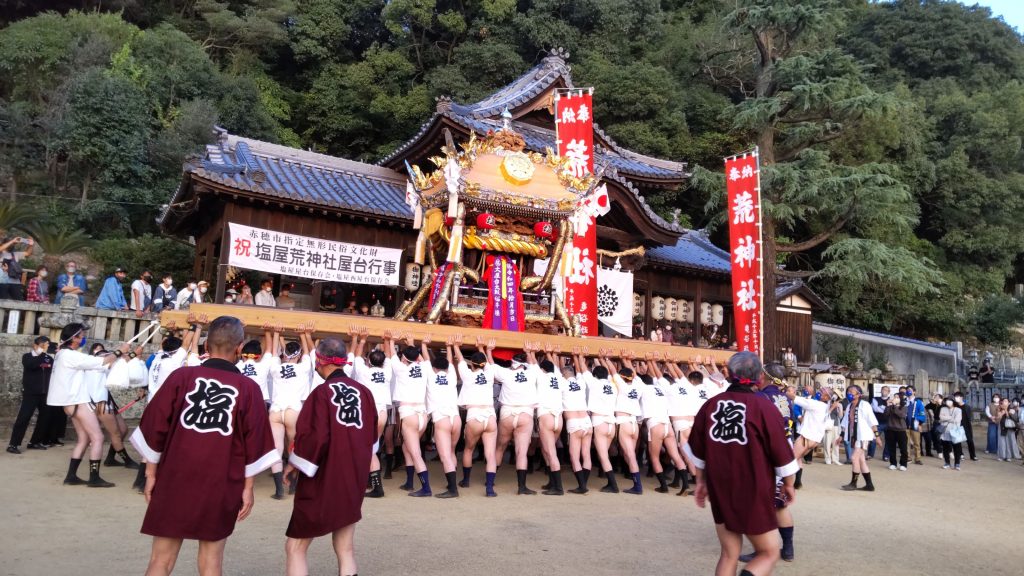
All photos and the video in this post were taken by Roxana Matthews. Thanks Roxi! XOX

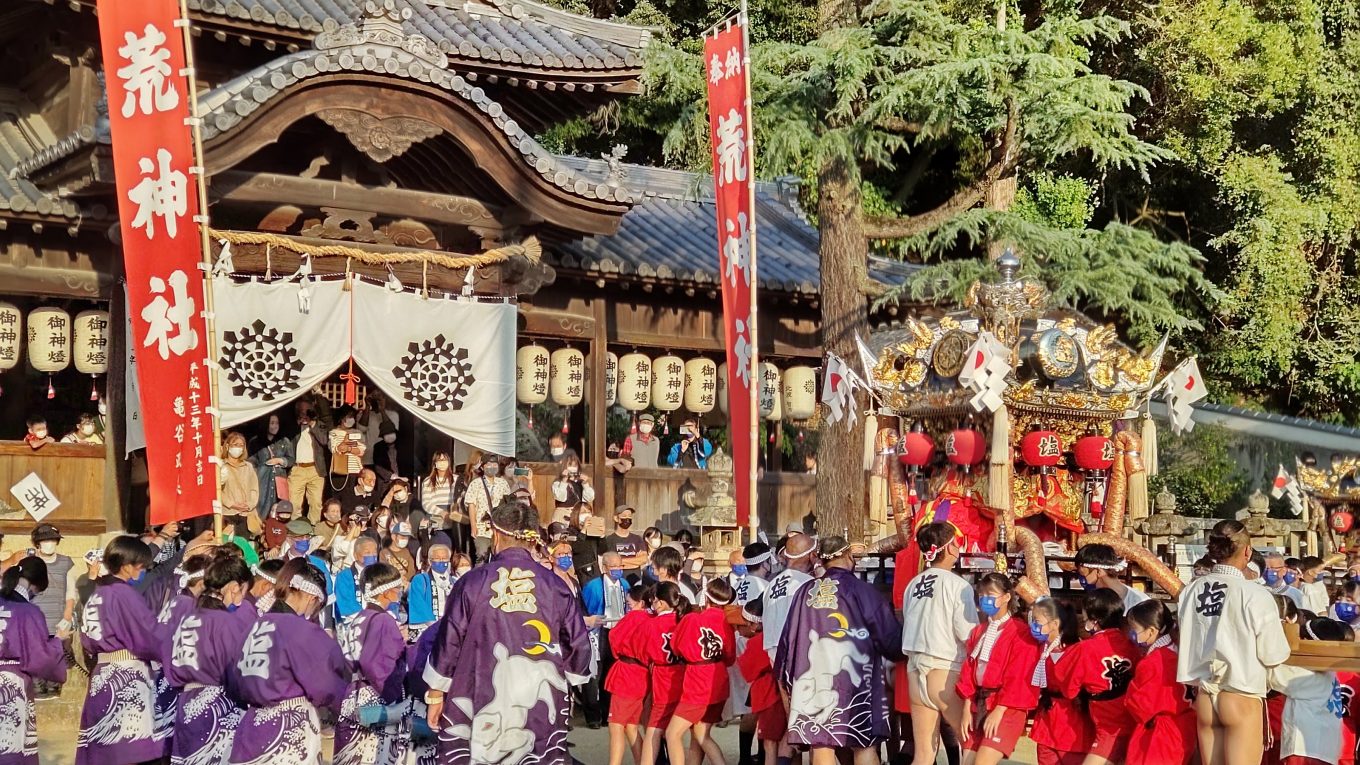
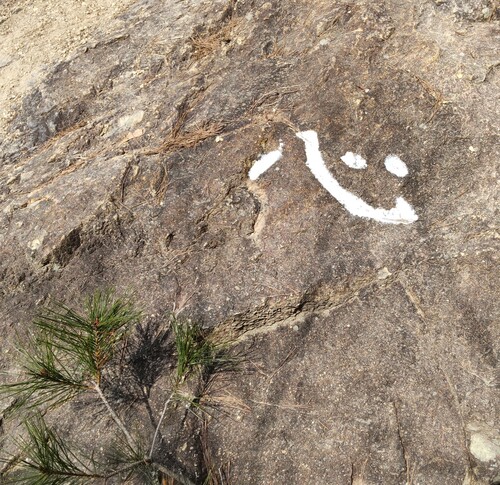
Oh my George (and Roxi 🙂 ). My spirit on this gray rainy late November day has been lifted by reading all your most recent posts. Admittedly, the stone Buddhas were the pinnacle but the others (Fuji, the Fall Festival, Bankei and the rice (and hydrangea) scenes) kept me in a sorely needed elevated mood.
You are so kind and giving to share all this with us.
I have a feeling the movie may have shown some of the night bonfires you got to see from your friend’s apartment but I was unable to activate it.
BTW, Thom is recovering rather well but not quite ready to hike that mass of volcanic rock up Mount Fuji with you.
Looking forward to your next posts.